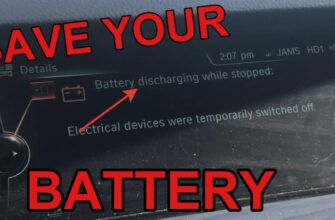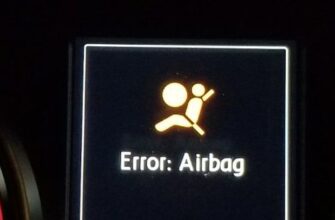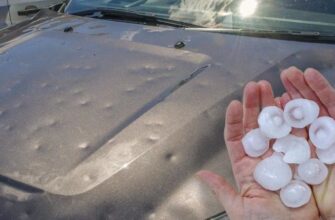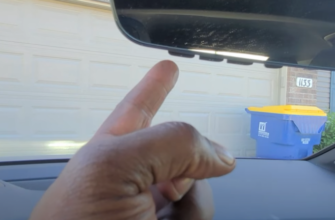Spotting that tell-tale puddle of brightly colored liquid under your BMW can send a shiver down your spine. A coolant leak isn’t just a messy inconvenience; it’s a warning sign that your engine’s cooling system isn’t working correctly, which can quickly lead to overheating and potentially very expensive damage. If you’re asking “how to fix a BMW coolant leak,” you’re addressing a common issue that many BMW owners face.
BMW cooling systems are known for being highly effective when everything is working perfectly, but they do have components that can become brittle and fail over time, especially plastic parts and rubber hoses subjected to years of heat cycles. Addressing a coolant leak promptly is crucial for maintaining your engine’s health and avoiding being stranded on the side of the road with an overheated car.
Whether you’re seeing a small drip, a steady stream, or notice your coolant level dropping, let’s dive into the common culprits and how to fix a BMW coolant leak.
Why Do BMW Cooling Systems Leak? Common Failure Points
BMW cooling systems are complex, with many potential points where leaks can develop. Understanding these common failure points is key to diagnosing the problem.
Here are some of the most frequent sources of a BMW coolant leak:
- Plastic Expansion Tank: The coolant expansion tank, often located in the engine bay, is a common failure point. Made of plastic, it can crack or split over time due to pressure and temperature fluctuations. Leaks from the expansion tank are usually easy to spot.
- Radiator Leaks: Radiators can develop leaks from cracks in the plastic end tanks, corrosion in the cooling fins, or failing O-rings at hose connections. You might see coolant dripping from the front of the vehicle, sometimes described as a BMW coolant leak from bottom.
- Hoses and Hose Connections: Rubber hoses degrade over time, becoming brittle or soft. The connection points where hoses attach to the radiator, engine block, or other components, secured by clamps, are also prone to leaks due to O-ring failure or loosening clamps.
- Water Pump: The water pump circulates coolant through the engine. Its seal can wear out, leading to a leak, often visible as dripping from the pump itself or the area beneath it.
- Thermostat Housing: The thermostat regulates engine temperature, and its housing, often made of plastic, can crack or warp, causing coolant to leak. The seal where the housing meets the engine can also fail.
- Various Gaskets and Seals: Gaskets and seals are used throughout the cooling system where components join together (e.g., intake manifold gaskets, various coolant flanges). These can eventually degrade and leak.
“I kept smelling something sweet after parking my BMW 3-series. I checked under the hood and noticed the coolant level was a bit low. Emily, 29, found a small crack in the plastic expansion tank. Replacing it myself was pretty straightforward and fixed the leak.” – A BMW 3-Series owner addressing an expansion tank leak.
Recognizing BMW Coolant Leak Symptoms
Beyond seeing a visible puddle, there are other signs that your BMW might be losing coolant:
- Low Coolant Level: Regularly check your coolant level when the engine is cool. If it’s consistently below the “minimum” mark, you likely have a leak or another issue causing coolant loss.
- Sweet Smell: Coolant has a distinct sweet odor. If you smell this inside or outside your car, it’s a strong indicator of a leak.
- Warning Light: Your BMW’s dashboard might display a low coolant warning light or an engine temperature warning if the leak is severe enough to cause the system to run low. Don’t ignore these lights!
- Engine Overheating: In more serious cases, a significant leak will lead to the engine overheating. Your temperature gauge will climb towards the red zone. If this happens, stop driving as soon as safely possible to prevent major engine damage. It’s important to note that sometimes a BMW leaking coolant but not overheating immediately can still be a significant leak that just hasn’t progressed to critical temperature levels yet, but still needs attention.
How to Fix a BMW Coolant Leak: Finding and Repairing the Source
Pinpointing the exact location of a coolant leak is the crucial first step to fixing it.
- Visual Inspection: With the engine cool, carefully inspect all the common leak points mentioned above. Look for colored coolant stains or residue, especially around hose connections, the radiator, the expansion tank, and the water pump area. A flashlight can be helpful.
- Pressure Testing: A cooling system pressure tester is a valuable tool for finding leaks. It connects to the coolant reservoir and allows you to pump air pressure into the system (to the level specified in your BMW’s manual). This pressure will often make a small leak more visible or audible. You can often rent or borrow these testers.
- UV Dye Test: Add a specialized UV dye to your coolant. Run the engine for a while, then use a UV light (blacklight) and special glasses to scan the cooling system components. The dye will glow brightly at the leak source.

Once you’ve found the leak, the repair involves replacing the faulty component. This could be:
- Replacing a hose and clamps.
- Installing a new expansion tank.
- Replacing the water pump or thermostat housing.
- Installing new O-rings or gaskets.
- In cases of a cracked radiator or significant damage, replacing the radiator.
Steps for a Typical Component Replacement (Example: Replacing a Hose):
- Ensure the engine is cool.
- Safely drain some or all of the coolant (depending on the leak location). Have a drain pan ready.
- Use pliers or a screwdriver to loosen the hose clamps.
- Twist and pull the old hose off the fittings. Be prepared for some residual coolant.
- Clean the connection points on the engine or radiator.
- Slide new clamps onto the new hose.
- Push the new hose firmly onto the fittings.
- Position the clamps correctly and tighten them.
- Refill the cooling system with the correct type of BMW-approved coolant (do NOT mix different coolant types).
- Bleed the cooling system to remove any trapped air according to your BMW’s service manual or online guides for your specific model. This often involves opening a bleed screw while refilling.
Replacing components like hoses, expansion tanks, or thermostats can often be a DIY job for those comfortable working on cars. More complex jobs like replacing the water pump might be better left to a professional. Sometimes, a leak can be temporarily slowed with a stop-leak product, but this is generally not a recommended long-term solution as it can clog other parts of the system. For temporary measures or understanding how to handle a situation where your car is overheating, you might find our guide on temporary fixes for an overheating car helpful, though addressing the leak itself is the priority.
BMW Coolant Leak Repair Cost
The BMW coolant leak repair cost can vary significantly depending on the source of the leak and whether you do it yourself or take it to a mechanic.
Here’s a general idea:
Note that these are just estimates, and costs can vary greatly based on your specific BMW model, year, engine type, labor rates in your area, and whether additional damage has occurred. For example, the BMW X5 coolant leak repair cost might be on the higher end due to the vehicle’s complexity. Discussions on forums like “how to fix bmw coolant leak reddit” can sometimes provide anecdotal cost data from other owners.
While you might find discussions about a BMW coolant leak recall online, there hasn’t been a widespread recall covering all types of coolant leaks across all models. Specific components on certain models might have been subject to recalls or extended warranties, but general coolant leaks due to age and wear are typically considered maintenance or repair items.+
“I had a bad coolant leak on my BMW 5-series. It was dripping pretty heavily near the front passenger side. Robert, 58, the mechanic found it was the radiator end tank that had cracked. The BMW coolant leak repair cost for the radiator replacement was about $700 at his shop, including parts and labor.” – A BMW 5-Series owner fixing a radiator leak.
Frequently Asked Questions (FAQ)
Q: What are the most common places for a BMW to leak coolant?
A: Common leak points include the plastic expansion tank, radiator end tanks, hoses and their connection points, the water pump seal, and the thermostat housing.
Q: Can I drive my BMW if it’s leaking coolant?
A: It is not advisable to drive with a coolant leak, especially if the level is dropping quickly or the engine is overheating. Continuing to drive can cause severe and permanent engine damage.
Q: Why is my BMW leaking coolant but not overheating?
A: If your BMW is leaking coolant but not overheating, it means the leak is likely slow, and the system still has enough coolant to regulate the temperature for now. However, the leak will worsen, and the coolant level will eventually drop too low, leading to overheating. It still requires immediate attention.
Q: Is fixing a BMW coolant leak expensive?
A: The cost varies depending on the component that is leaking. Simple fixes like a hose or expansion tank can be relatively inexpensive, while replacing components like the water pump or radiator will be more costly, especially if done by a mechanic.
Q: Are BMW coolant leaks covered by a recall?
A: There is no single widespread BMW coolant leak recall for all models and types of leaks. Some specific components on certain models may have had recalls or extended warranties, but most coolant leaks are considered standard repairs due to wear and tear.
Conclusion
A coolant leak in your BMW is a serious issue that requires prompt attention to prevent costly engine damage. Understanding the common leak points and recognizing BMW coolant leak symptoms are the first steps in addressing the problem. While some leaks, like a cracked expansion tank or a failing hose, might be repairable by a skilled DIYer, more complex issues or those involving critical components like the water pump may require professional expertise. Get the leak diagnosed correctly – whether through visual inspection, pressure testing, or a UV dye test – and address it using the correct parts and procedures. While the BMW coolant leak repair cost can vary, it will almost always be less expensive than repairing an engine damaged by overheating. Don’t delay; fix that leak and keep your BMW’s engine running cool and healthy.








